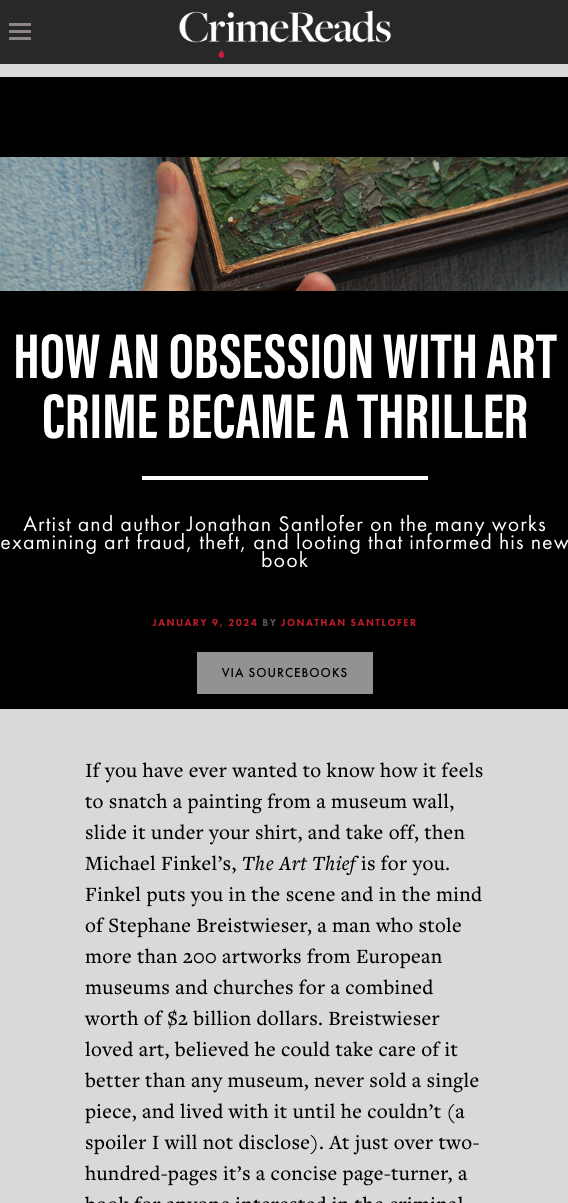Artist and author Jonathan Santlofer on the many works examining art fraud, theft, and looting that informed his new book
If you have ever wanted to know how it feels to snatch a painting from a museum wall, slide it under your shirt, and take off, then Michael Finkel’s, The Art Thief is for you. Finkel puts you in the scene and in the mind of Stephane Breistwieser, a man who stole more than 200 artworks from European museums and churches for a combined worth of $2 billion dollars. Breistwieser loved art, believed he could take care of it better than any museum, never sold a single piece, and lived with it until he couldn’t (a spoiler I will not disclose). At just over two-hundred-pages it’s a concise page-turner, a book for anyone interested in the criminal mind, with all the daring and chutzpah it takes to steal art, a true tale that will thrill you (but hopefully not inspire you)!
You could say I’ve been obsessed with art crime for a long time. Not only because I went to art school and studied painting but because I have been creating forgeries and fakes, exact replicas of famous and semi-famous artworks, for art collectors for the past twenty years. “Legal” fakes and forgeries, that is, a side gig that led me to the study and psychology of art forgers, thieves, and the world of art crime which, after drugs and illegal arms, is the third largest criminal activity in the world (50,000-100,000 works of art stolen annually and only 5-10% ever recovered).
Over the course of my writing career, I’ve interviewed members of the FBI’s Art Crime Team, an inspector from Scotland Yard’s Art and Antiques unit, and even modeled one of my main characters, John Washington Smith, the INTERPOL art analyst in The Lost Van Gogh and The Last Mona Lisa, after a retired INTERPOL analyst who generously shared some of his secrets.


